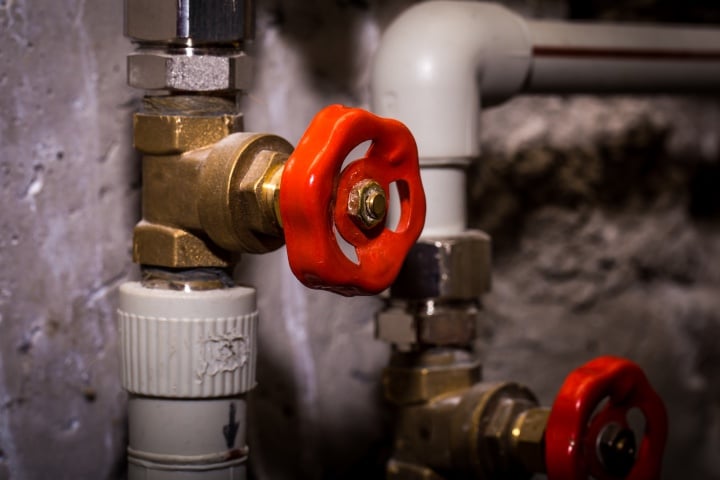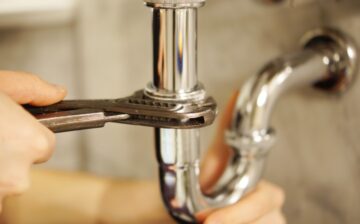You’re planning a move, and the last thing you want is a cold shower on day one. Before signing the final papers, it’s crucial to spot hot water system pitfalls lurking in your next place.
Watch for leaks, rust, or strange noises that hint at an aging unit. Unpleasant temperature swings can also signal failing parts needing prompt attention, so you avoid costly repairs once you’ve moved in.
For a deeper look at early warning signs and key solutions, explore our hot water system guide. You’ll find practical tips to ensure you’re not stuck with cold showers and unexpected repair bills.
Check for Rusty Water
Rusty or discolored water is an indication your hot water system might have internal corrosion. Testing taps and examining water color can highlight these concerns.
- Check cold versus hot faucets first. If only the hot supply is rusty, your tank might be compromised or developing rust inside.
- Drain a portion of water. Gather water in a bucket from the heater’s drain valve to check for unnatural coloring or sediment.
- Look at the distribution pipes. Rusty water can also indicate old plumbing, so check whether the issue persists from multiple home fixtures.
Regular checks for rusty discoloration can help you prevent unexpected heater breakdowns. Early detection saves you money and protects your home’s essential hot water supply.

Listen for Unusual Noises
Banging, popping, or hissing from a hot water heater can indicate buildup or loose parts. Observing these odd sounds is crucial to preventing system complications.
Potential Sediment Blocks
Over time, mineral deposits can accumulate inside the tank and cause rumbling noises. Sediment reduces efficiency and may lead to overheating or extended burner cycles.
Loose Exterior Components
Fasteners that hold heater panels in place can loosen and cause rattling. Continual vibrations may weaken internal connections and create ongoing mechanical frustration if ignored.
Normal Expansion Sounds
Some ticking emerges as pipes expand due to temperature changes. These harmless sounds rarely signal a problem, but tracking them helps rule out possible malfunctions.
Paying attention to unfamiliar noises helps you respond promptly. Simple maintenance or part replacement frequently solves these issues before significant water heater failure can develop.
Identify Leaks around Heater
Unseen water pooling near the heater may signal loose connections or tank corrosion. Checking the area below and around pipes reveals early warning signs efficiently.
- Scan floors and walls. Damp spots or discoloration often appear around the base, indicating slow leaks that can damage structural components.
- Examine valves and fittings. Loose joints frequently drip, so tighten them carefully or replace worn washers if you detect moisture accumulation.
- Check internal compartments. Some water heaters have insulation panels that mask slow leaks, requiring closer inspection behind removable covers.
Persistent leaks are red flags for possible tank failures or compromised plumbing. Prompt repairs guard against costly property damage and ensure continuous hot water availability.
Test Hot Water Temperature
Temperature readings confirm your heater’s performance and safety. Excessive heat can cause scalding, while cooler settings might mean the unit isn’t functioning at its best.
Basic Thermometer Check
Fill a cup from the faucet and measure with a cooking thermometer. Aim for readings around 120°F to balance comfort, energy efficiency, and burn prevention.
Adjusting Dial Settings
Locate your heater’s temperature control dial and make slow increments. Testing water temperature after each adjustment ensures you find a suitable balance for personal preferences.
Watch for Inconsistent Output
Erratic swings in water heat often point to a failing thermostat or heating element. Frequent temperature changes deserve immediate investigation and possible thorough professional evaluation.
Confirming consistent water temperatures sustains household comfort while reducing risks. This approach clarifies whether the heater works optimally or needs maintenance checks for reliable use.
Examine Water Flow Issues
Poor water pressure or sluggish flow may suggest partial blockages, failing valves, or a deteriorating unit. Resolving low flow maintains consistent performance and user satisfaction.
- Check showerheads and faucets. Mineral scale often builds on fixtures, limiting water output even when the heater is otherwise fine.
- Inspect the inlet valve. A partially closed or damaged valve can restrict flow, so open it fully or replace it if needed.
- Consider sediment flushing. Excess buildup inside the heater can reduce water force, especially in aging tanks lacking routine maintenance.
Maintaining steady water flow extends system longevity and helps avoid frustrations. Promptly isolating pressure concerns reduces the likelihood of unexpected performance or major component failures.
Inspect Age of System
Determining how old a water heater is crucial when moving into a new place. Aging units can break, risking property damage and higher replacement costs.
Check Manufacturer Label
Heater labels often list the original install date. If missing, a serial number might reveal month and year. Reference brand-specific formats for precise manufacturing information.
Decode the Serial Number
Most manufacturers embed production details in their serial codes. Following official charts or using resources like this online guide clarifies the unit’s true age.
Consider Replacement Timeline
Many electric heaters last around 10–15 years. Heat pump models might reach 20 years. Knowing the leftover lifespan assists your plans and potential budget developments.
Evaluating the heater’s age prevents urgent surprises. When you’re proactive, you reduce insurance complications and protect household routines, ensuring you know what’s under your roof.
Check for Warning Lights
Modern heaters feature indicator lights for temperature settings or error codes. Monitoring distinct flashes helps you catch trouble early and schedule routine maintenance as required.
- Observe blinking patterns. Specific sequences often correspond to issues like power interruptions, blocked flues, or temperature sensor failures that demand swift professional checks.
- Check color-coded indicators. Green lights might show normal functioning, while red signals can announce overheating or ignition complications.
- Consult the manual. Manufacturer guides typically decode each blinking combination, offering immediate insights into potential problems or recommended steps.
Staying alert to blinking signals stops minor concerns from escalating. Familiarity with these codes ensures you don’t overlook critical details about your water heater’s condition.
Perform Heater Reset Test
Sometimes a quick reset resolves minor electrical or thermostat glitches. Testing the reset function reveals whether deeper problems lurk or if a simple fix works.
Check Your Breaker
Switch off your water heater’s breaker, then turn it on again. This step ensures there’s a stable power supply before pushing the device’s built-in reset button.
Press Reset Button
Locate the small button near the thermostat and press firmly. If it immediately trips again, consult a trusted professional.
Allow Time to Reheat
After a successful reset, wait several hours for the water to warm up. Sudden cold bursts may indicate further complications requiring immediate thorough professional attention.
Testing the reset process clarifies if your system merely needs a quick fix. Prompt action can preserve efficiency and reduce stress during a hectic move.
Schedule a Professional Inspection
Sometimes a hands-on expert evaluation is the best approach for guaranteeing safe operation. Arranging an inspection helps you address hidden risks before finalizing your move.
Uncover Concealed Damage
Technicians open panels, check heating elements, and look for corrosion or leaks. This thorough review keeps you informed of critical repair needs ahead of time.
Validate Warranty Options
Verifying warranty status is easier with professional input. If coverage remains, you might qualify for discounted replacement parts or free service calls, saving considerable expenses.
Ensure Local Code Compliance
Rules vary by region, so official inspections confirm your water heater installation meets safety standards. Noncompliance triggers fines and legal troubles you want to avoid.
Professional input reduces setbacks during a move. Leaving this step for last might jeopardize your household’s hot water needs and lead to guesswork under pressure.
Catching Hidden Clues
Protect yourself from costly hot water surprises. Conduct quick checks, trust your instincts when detecting unusual changes, and promptly call in a pro if needed. Stay vigilant and confident. This ensures a worry-free move.
We hope you found this blog post about Moving Soon? How to Spot Hot Water System Issues, useful. Be sure to check out our post Try These Easy Hacks to Fix a Leaking Shower for more great tips!
Have Experience in the Moving Industry? Want an Additional Income Stream? Work With All Around Moving!
Partner with us and we’ll help you profit in the industry. Click here to learn more.





